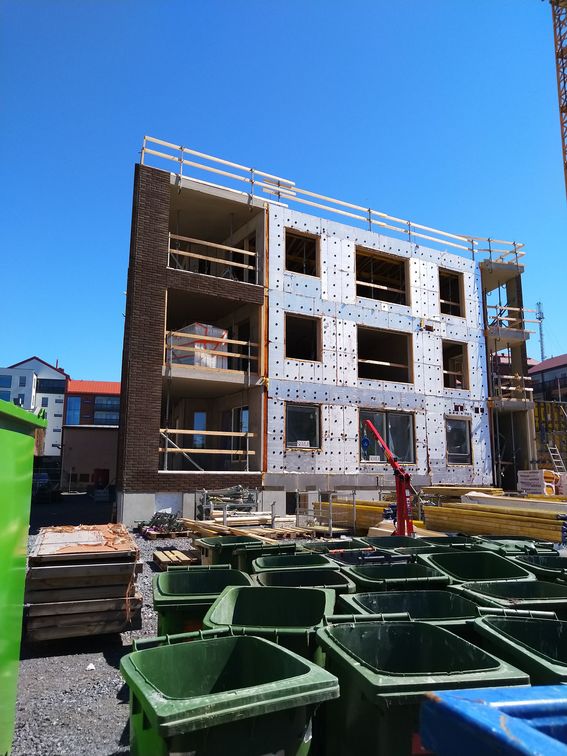26 kg of film plastic waste is generated in the construction of one apartment building – a new, free tool helps with recycling

Gypsum boards, kitchen cabinets, insulating wool, parquet floor - an enormous amount of construction materials arrive at building sites wrapped in film plastic.
‘Until now, film plastics have mainly ended up in energy waste, i.e. incineration. It is better than throwing into mixed waste – but not the best solution for the environment’, says Antti Peltokorpi, associate professor of operations management in construction at Aalto University.
Together with doctoral researcher Krishna Chauhan, he studied in a research commissioned by the Ministry of the Environment how much film plastic is produced on average in the construction of apartment blocks. In Finland, accurate information on the amount of plastic waste has not previously been available, which has made it difficult to arrange recycling at construction sites.
The research involved three concrete building sites and, as a benchmark, one wooden block of flats. Separate collection of film plastic waste had been arranged at the construction sites. For the purposes of the research, the emptying times of the collecting bins and the weight of the waste were recorded and data on how much coloured plastic or dirty plastic was found.
In concrete element buildings, the average amount of film plastic waste was 0.33 kg per gross square. Per apartment it means approximately 26.2 kg. The wooden block of flats produced 3.4 times more film plastic waste than the concrete site. This is because in wooden blocks of flats, the exterior wall elements must also be protected during transport. In the control building, each wooden element was protected separately. If each bundle of wooden elements is protected, 0.7 times more film plastic is used than in the concrete building site.
Dirty and coloured film plastic accounted for an estimated 15–30 per cent of the total amount. Both dirt and the colouring of plastic can make it more difficult to process the material further, says Peltokorpi.
‘When different colours end up in recycled plastic, grey recycled plastic is produced. Colour plastics are used the most because of branding, but better alternatives should be considered.’
Bins in the right place and at the right time
Based on the findings, the researchers developed a modelling tool that allows the developer or the main contractor to assess in advance how much film plastic waste is generated and at what stages of construction. This means that the correct number of recycling bins is available in the right places, at the right time. Film plastic waste is most produced during the indoor manufacturing phase, especially from furniture, windows and doors, tiling, ceilings and for covering.
However, good logistics is not enough, Peltokorpi emphasises.
‘The role of the main contractor is very important. We must consider how the entire construction site organisation, which often includes a large number of subcontractors, can be committed to separate collection.’

The economic incentive for the recycling of film plastic is small. Unlike in the case of mixed waste, there is no waste charge for film plastics. On the other hand, purchasing new recycling bins may cost money. What may also cause low motivation is the fact that while building sites produce enormous amounts of waste, the share of film plastic is very small.
‘One apartment block can produce 2,000 kg of film plastic waste – and a hundred times more of other waste, such as concrete and wood’, Peltokorpi says and emphasises that direct economic benefit is not the only motivator. Many developers may require environmental certificates from the contractor, for example.
An increasing number of companies are also involved in the Green Deal for the construction sector, one of the key objectives of which is to enhance the recycling of plastics in construction.
Recycling could also be made more efficient by using digital product information more efficiently.
‘Material deliveries could include information on how much film plastic has been used for packaging and cover’, says Peltokorpi.
Modelling tool (kalvomuovi.fi, in Finnish)
Read more news

The School of Business renews its status as a Champion member of the global PRME network for sustainability education for 2026–2027
Only two other Nordic universities were awarded Champion-level membership
Meet Shaya Vosough, assistant professor of transportation engineering
Shaya Vosough seeks to understand our travel choices and how they are influenced.
Start the year with new insights – apply for FITech's spring courses!
Deepen your knowledge with courses from Finnish universities of technology, designed to meet the demands of the working life and help deepen your expertise for free.






